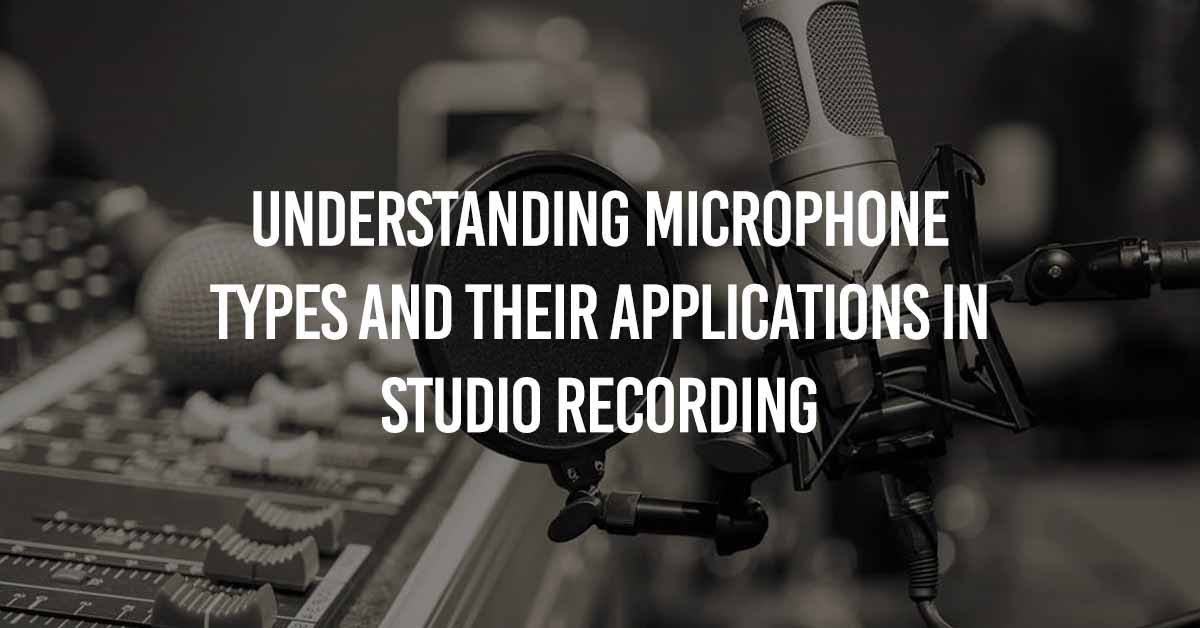Understanding Microphone Types And Their Applications In Studio Recording

Microphones play a critical role in sound engineering and serve as the gateway for great sound. The mic helps in capturing the singer’s voice, resonates the sounds of guitar, and layers the choir’s harmony making it an important tool to preserve the integrity of the performance. Hence, this paves way to choose the right mic as an unstable mic can make the vocals flatten, disturb the instrument tones and can even introduce the extra noises during the post-production. So, a right mic becomes necessary to elevate the performance and ensure that any inconvenience is not entertained. Therefore, this blog from Tase, the best sound engineering colleges in Chennai, explores how microphone works, its various types, and guide on how to choose the right one.
The Science Of How Microphones Work
The mic serves as a transducer (a device that converts energy from one form to another) converting the sound energy into electrical energy. So, when the sound waves hit the microphone causing them to vibrate which is later translated into electrical signals. Hence, these electrical signals are amplified, recorded, and processed to achieve the necessary audio output.
Thus, this simple and elegant principle of the microphones is the foundation but there can be specific methods of conversion paving the way to various types of microphones. This understanding is essential as it helps the sound engineers to understand certain microphones excel in particular recording situations.
Major Types Of Microphones
Dynamic Microphones (Moving Coil)
The dynamic microphones or moving coil is a certain type of microphone which uses a diaphragm combined with wire coil. These are placed within the magnetic field of the magnet so when the sound waves hit the diaphragm the coil moves leading to electrical signal generation. The dynamic microphones are tough and are a perfect option for loud sounds as they can handle high sound pressure levels (SPLs). Some examples of dynamic microphones are Shure SM57 and Sennheiser MD421, ideal for guitar amps and brass instruments.
Condenser Microphones
Secondly, the condenser microphones are staple devices used in the professional studio and are known for extreme sensitivity and sound production. Similar to the dynamic microphones, these also include a diaphragm which is lightweight and placed close to the backplate forming a capacitor. So, we the sound waves hit the diaphragm the changes between the two plates produce the necessary signal. However, this type of microphones require external power or phantom power. They are primarily used for capturing vocals and acoustic instruments in the studio settings. Some of the examples for condenser microphones include Neumann U87 and AKG C414.
Ribbon Microphones
The ribbon microphones are known for natural, smooth, and vintage sound quality. These mics work on the principle where a thin metal ribbon is suspended in the magnetic field and when the sound waves hit they generate a signal. The main purpose of the ribbon microphones offer warm and natural sound for the vocals, strings, and brass. These are also bi-directional. Some examples of the ribbon microphones include Royer R-121 and AEA R84 for classic vocal tones and guitar amps.
Choosing The Right Mic And Micing Technique
Mono vs. Stereo Recording
Mono records one channel and is best for concentrated sound sources such as a lead vocal or single instrument.
Stereo records depth and space using two channels. Apply it to overheads on drums, choirs, or ambient room recording to capture space.
Solo vs. Ensemble
Solo recordings take advantage of close-miking and nuanced condenser mics to highlight tonal nuances.
Ensemble recordings frequently employ several mics with varying polar patterns and placements to produce balance and definition.
Room Acoustics
A mic is only as good as the room it is placed in. Unwanted echoes result from reflective surfaces; an accurately treated space provides precise recordings.
Untreated rooms are more forgiving for some mics (e.g., dynamic mics), but condensers will hear every detail—flaws included.
Mic Choice
• Use a dynamic mic for drumming, electric guitar amp, or live vocal.
• Use a condenser mic for studio vocal, piano, or acoustic guitar.
• Ribbon mic to add vintage charm or soft, warm tones.
In studio recording, microphones don’t just pick up sound—they craft it. From a grasp on how they function to choosing the correct type and approach, control of microphones is essential to recording good sound. Your choice of mic and micing technique should match your recording goal, whether it’s a solo vocal or a full band session.
If you’re eager to explore these microphones hands-on, visit TASE, one of the best colleges offering music production courses in Chennai to learn, and bring the sound to life with the right tools and expert guidance.

